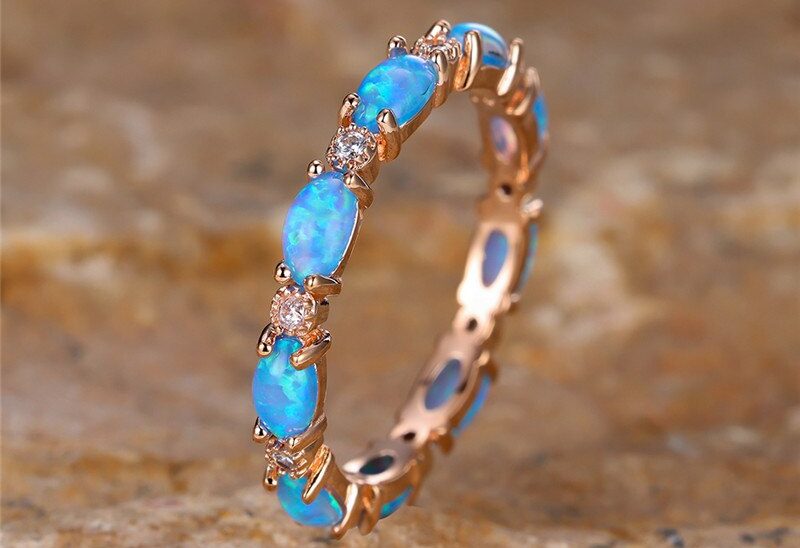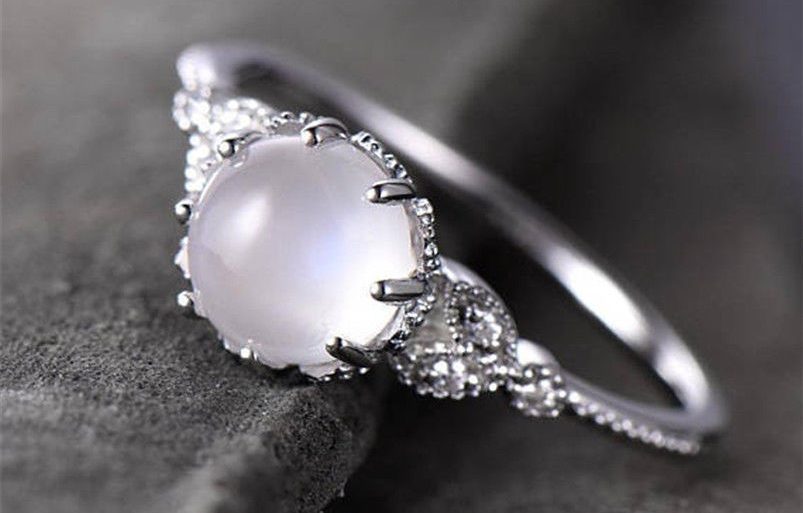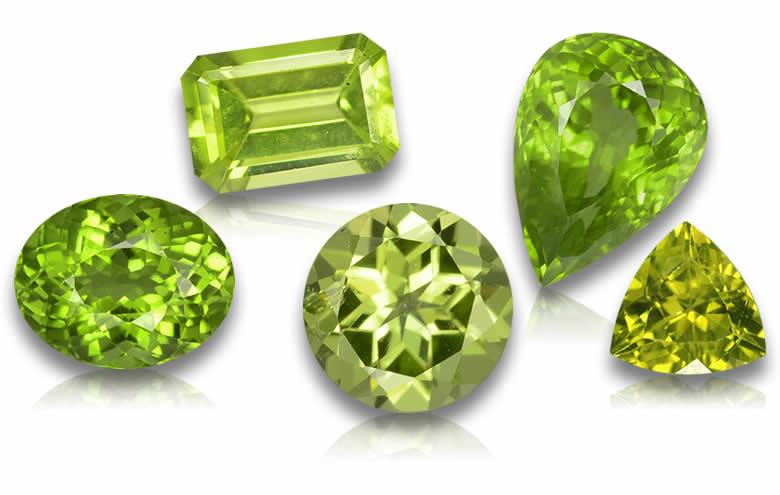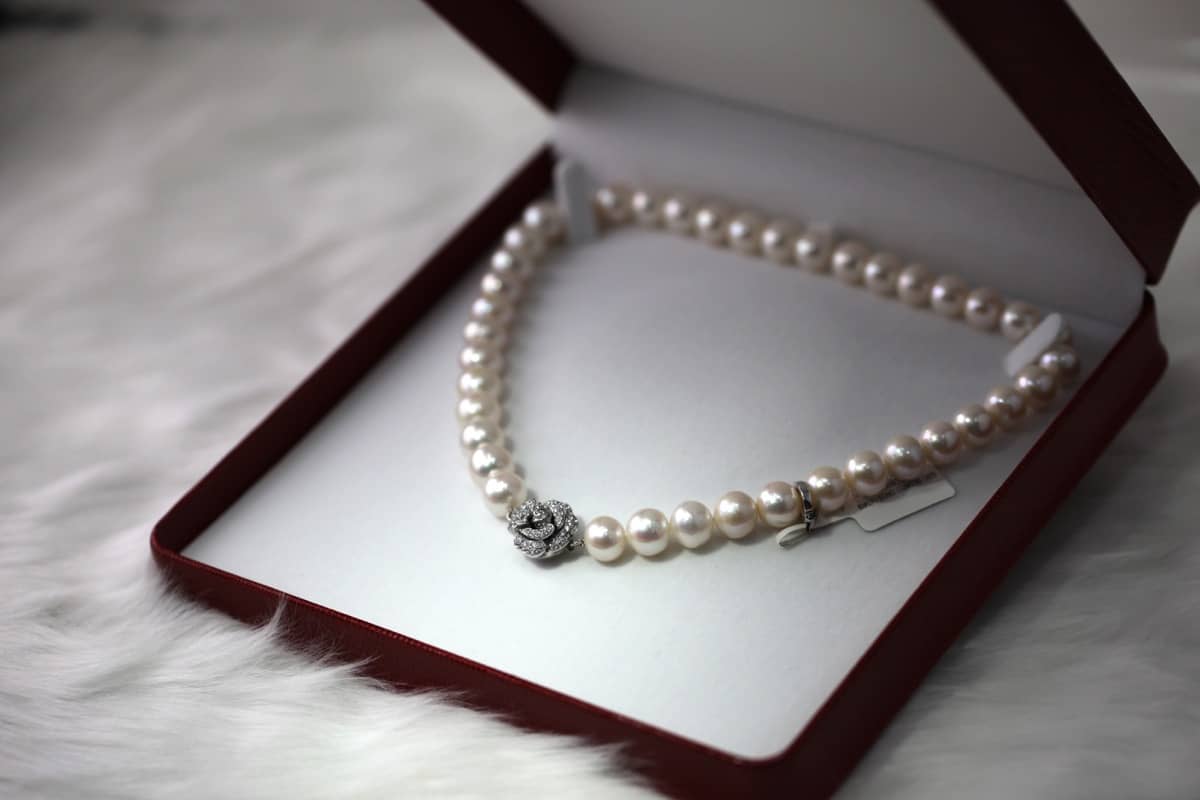Quick info about Opal Birthstone
- Official birthstone: October
- Colors: Known for its iridescent play-of-color, which can include various hues like blues, greens, reds, and more.
- Meaning: Opal is associated with inspiration, creativity, and emotional expression.
- Zodiac signs: Libra and Scorpio
- Mohs hardness: 5.5-6.5
Birthstones have long held significance and captivated the imagination of humanity. These gemstones, associated with each month, are believed to bring good fortune, energy, and protection to those born within their corresponding time frame. With their dazzling beauty and rich symbolism, birthstones have become treasured heirlooms passed down through generations.
In this article, we delve into the enchanting world of birthstones and focus our attention on the October birthstone: Opal. Known for its mesmerizing play-of-color and kaleidoscopic hues, opal stands out as a truly unique gemstone that holds a special place in the hearts of individuals born in this bewitching autumn month.
Brief overview of birthstones and their significance
The concept of birthstones dates back thousands of years. It is believed to have originated from ancient biblical times when twelve stones representing the twelve tribes of Israel were mounted on Aaron’s breastplate. Each stone corresponded to a specific zodiac sign or month.
Over time, different cultures developed their own lists of birthstones. The modern list widely accepted today was established by the American National Association of Jewelers in 1912.
This standardized list assigns a unique gemstone to each month based on popularity, rarity, historical significance, and cultural associations. Birthstones are believed to possess various qualities such as luck, protection, healing powers, and heightened spirituality.
They are often worn as jewelry or incorporated into talismans or amulets for their perceived benefits. Many people feel a deep connection with their birthstone and cherish it as a personal symbol of identity or a talismanic protector against adversity.
Introduction to the October birthstone: Opal
The radiant opal reigns supreme as the mystical October birthstone. With its ethereal beauty and captivating play-of-color, opal has enchanted humanity throughout history.
This gemstone derives its name from the Latin word “opalus,” meaning precious stone. Opals are revered for their ability to display a kaleidoscope of colors, creating an otherworldly visual experience that is truly unparalleled.
Opals belong to the mineraloid family, which means they lack a crystalline structure found in most gemstones. Instead, opals form from hydrated silica gel that seeps into gaps in rocks over millions of years, solidifying and creating their unique internal structure.
This unique composition gives opals their characteristic play-of-color phenomenon, where rainbow-like flashes of light dance across the surface as the gemstone is moved. The mesmerizing play-of-color seen in opals is formed due to the internal arrangement of silica spheres within the stone.
These spheres diffract light, causing it to break into separate colors and create a stunning interplay of hues. The intensity and range of colors depend on factors such as sphere size, arrangement, and even moisture content within the stone.
The Historical Background of Opal
Ancient Origins and Cultural Significance
Opals have a rich historical background that dates back thousands of years. The allure of opals can be traced to ancient civilizations such as the Romans, Greeks, and Egyptians, where these dazzling gemstones were highly valued for their captivating play-of-color.
The Romans believed that opals were symbols of hope and purity, associating them with love and fertility. They admired opals for their ability to display various colors, often comparing them to rainbows captured in stone.
Similarly, in ancient Greece, opals were held in high regard and considered precious treasures. The Greeks attributed the origin of opals to the tears shed by Zeus when he defeated the Titans.
They considered opals as symbols of protection from harm and associated them with prophecy and foresight. The exquisite beauty of opal gemstones captivated Greek poets who would describe the stones as frozen fragments of sunset or a kaleidoscope trapped within a gemstone.
The ancient Egyptians also revered opals for their enchanting beauty and spiritual significance. They believed that opals embodied the celestial colors found in the sky during lightning storms.
According to Egyptian mythology, an opal’s iridescent play-of-color was thought to represent cosmic energy trapped within the stone. These magnificent gems were highly prized by pharaohs who often wore them as talismans for protection or incorporated them into jewelry designed for gods and goddesses.
Beliefs and Myths Associated with Opals in Different Cultures
Opals have long been surrounded by myths, legends, and superstitions throughout different cultures around the world. In many Arabian cultures, it was believed that opals fell from heaven during thunderstorms due to their vibrant play-of-color resembling flashes of lightning captured within a stone.
These beliefs contributed to an aura of mystique surrounding opals, and they were seen as symbols of good luck and fortune. However, not all ancient beliefs surrounding opals were positive.
In medieval European folklore, opals were often associated with bad luck and considered “evil stones” due to their ability to display various colors. These superstitions led to a decline in the popularity of opals during the Middle Ages.
This perception began to change in the 19th century when Queen Victoria’s love for opals sparked a resurgence in their popularity. In Aboriginal Australian culture, opals hold immense significance as they are considered sacred gemstones that originate from the Creator’s footprints during the Dreamtime.
These gemstones are believed to possess spiritual powers and bring harmony and healing to their wearers. The Aboriginal people hold great respect for opal mining sites, considering them sacred grounds that should be treated with reverence.
Opal’s historical background is a tapestry woven with tales of admiration, superstition, and reverence from cultures across the globe. From ancient civilizations like the Romans and Greeks who cherished these gems for their awe-inspiring play-of-color, to cultures that assigned spiritual significance over centuries like the Egyptians and Aboriginal Australians – each tale is a testament to humanity’s fascination with these mesmerizing stones throughout history.

Geological Formation of Opal
Opal, the mesmerizing gemstone that graces the October birthstone list, possesses a truly fascinating and unique formation process. To understand how opals are created, one must delve into the intricate realm of geology.
These magnificent gemstones originate from silica-rich solutions that seep into cavities and voids within rocks. Over time, these solutions undergo an intriguing transformation, resulting in the formation of opals.
Explanation of Opal’s Unique Formation Process
Opal owes its existence to a process known as “precipitation.” When water containing dissolved silica infiltrates cracks and fissures in host rocks, it begins to evaporate due to changes in temperature or pressure. As the water evaporates, it leaves behind tiny spheres of silica that gradually accumulate over thousands of years. This accumulation creates a unique network-like structure within the rock voids, eventually developing into precious opal.
The Role of Silica in Opal Formation
Silica plays a pivotal role in opal formation. Silica is a compound composed of silicon and oxygen atoms (SiO2) commonly found in abundance on Earth’s crust.
It is through the interaction between silica and water that opals come into being. When water carrying dissolved silica enters rock crevices or spaces left by decomposed organic matter like wood or shells, it begins to deposit microscopic particles of silica upon evaporation.
The deposition process is gradual but continuous as more water enters these voids over time. The accumulated layers of silica particles form tiny spheres with precise arrangements that diffract light and create opals’ magical play-of-color phenomenon.
Conditions Required for Opals to Develop Their Characteristic Play-of-Color
Opals exhibit their enchanting play-of-color due to their unique internal structure caused by light interference. The formation of opals with this captivating optical effect requires specific conditions.
Firstly, the silica spheres within the opal must be evenly sized and arranged in a regular pattern. This uniformity allows the wavelengths of light to diffract and interfere with each other, resulting in the display of brilliant colors.
Secondly, for play-of-color to manifest, there must be a significant difference in refractive index between the silica spheres and the surrounding material. This variation causes light to bend and scatter as it passes through different layers within the opal structure, enhancing its iridescence.
External factors such as the presence of impurities and trace elements can also influence an opal’s play-of-color. These impurities can alter the arrangement or size of silica spheres or introduce additional elements that contribute unique hues to the gemstone.
Understanding the geological processes involved in opal formation reveals why these gemstones possess such extraordinary beauty. From silica-rich solutions finding their way into rock cavities to intricate precipitation processes resulting in mesmerizing play-of-color effects, opals truly exemplify nature’s ability to craft wonders that captivate our imaginations.
Types and Varieties of Opal
Overview of different types based on their physical properties
Opals, the captivating gemstones of October, come in a fascinating array of types and varieties, each possessing its own distinct physical properties. Understanding the diverse range of opals is crucial for both collectors and enthusiasts alike. From precious opals that exhibit mesmerizing play-of-color to common opals with their unique allure, this section delves into the various classes of opals.
Precious Opals: Black, White, Crystal, Boulder, Jelly, etc.
Among the most sought-after opals are the precious varieties renowned for their enchanting play-of-color. The black opal stands out as one of the most prized gems due to its contrasting dark body tone that enhances vibrant flashes of color.
White opal is characterized by a pale or translucent body tone complemented by delicate pastel hues. Crystal opal is renowned for its transparency and exceptional clarity, allowing light to penetrate deeply and create stunning spectral displays.
Boulder opal captivates with its striking combination of vibrant colors embedded within intricate ironstone matrix formations. Jelly opal exhibits a translucent appearance reminiscent of a deliciously captivating gemstone confection.
Common Opals: Fire Opal, Hydrophane Opal, Milk Opal, etc.
While not as renowned as their precious counterparts in terms of play-of-color intensity or rarity, common or non-precious opals possess unique characteristics that warrant appreciation in their own right. Fire opals fascinate with their warm hues ranging from yellow to orange to deep red tones resembling flickering flames captured within the stone’s depths. Hydrophane opals have an intriguing property where they can absorb water temporarily, enhancing their transparency and lustrous appearance when wet but returning to normal once dry again.
Milk opals, as the name suggests, exude a milky or opaque appearance due to their internal structure and lack of play-of-color. However, their soft, ethereal presence adds a delicate touch to jewelry designs.
Opals offer a captivating variety of types and varieties that enchant admirers across the globe. Precious opals such as black, white, crystal, boulder, and jelly showcase the pinnacle of opal’s play-of-color wonders.
On the other hand, common opals like fire, hydrophane, and milk exhibit distinctive characteristics that appeal to different tastes. Understanding these diverse types and varieties paves the way for a deeper appreciation of this mesmerizing October birthstone – Opal.

Characteristics and Properties of Opals
Physical properties that make opals highly valued
Opals are esteemed gemstones renowned for their mesmerizing beauty and distinctive play-of-color. This captivating phenomenon, along with other physical properties, contributes to the high value of opals in the world of gemstone enthusiasts and collectors. One remarkable characteristic that sets opals apart is their amorphous structure, which means they lack a crystal lattice arrangement like other gems such as diamonds or rubies.
Instead, opals consist of tiny silica spheres that form intricate patterns within their structure. This unique composition gives rise to a range of remarkable optical effects.
Play-of-color: Explanation of the mesmerizing iridescence seen in precious opals
The play-of-color exhibited by precious opals is an ethereal display of multicolored brilliance caused by light interference within their microstructure. When light enters an opal, it interacts with the orderly arrangement of its silica spheres on a microscopic level.
These transparent spheres diffract light waves, causing them to split into spectral colors visible to our eyes. The play-of-color can range from vibrant reds, oranges, blues, and greens to softer pastel hues or even flashes resembling lightning.
a) Factors influencing play-of-color: Size and arrangement of silica spheres
The size and arrangement of the silica spheres within an opal greatly influence its play-of-color. In general, smaller spheres tend to create blue or violet hues due to shorter wavelength diffraction, while larger spheres produce warmer colors like reds and oranges due to longer wavelength scattering. The ideal size range for maximum color intensity is between 150 and 350 nanometers (nm).
Additionally, the regularity and uniformity in the distribution of these spheres affect the intensity and pattern formation in an opal’s play-of-color. The more organized their arrangement, the more spectacular the display.
b) Explanation of diffraction and interference phenomena causing color display
The remarkable play-of-color in opals is a result of two optical phenomena: diffraction and interference. Diffraction refers to the bending or spreading of light as it passes through small openings or around tiny objects, such as the silica spheres in opals. When white light illuminates an opal, different colors of light are diffracted at varying angles by these spheres, resulting in the spectral colors visible to our eyes.
Interference occurs when these diffracted waves interact with each other, leading to constructive or destructive interference depending on their wavelengths and phase alignment. Constructive interference enhances certain colors while suppressing others, amplifying the opal’s play-of-color.
Understanding these physical properties and optical phenomena responsible for opals’ enchanting play-of-color adds to their allure and fascination. These captivating gemstones continue to captivate admirers worldwide due to their unique composition and mesmerizing visual effects that make each opal a truly one-of-a-kind natural masterpiece.
Opal Mining Locations around the World
Australia: The Land of Opals
Australia is undeniably the world’s largest producer of high-quality opals, making it a true opal-lover’s paradise. Within its vast landscape lie several renowned mining destinations that have yielded some of the most exquisite opals known to humankind. One such location is Lightning Ridge, nestled in New South Wales.
Here, miners brave the scorching sun and rugged terrains in pursuit of precious black opals, renowned for their captivating play-of-color that dances across dark backgrounds like vivid dreams. Moving towards the heart of Australia lies Coober Pedy, a unique mining town famous for its underground dwellings and “opal fever.” This arid land conceals an abundance of opal deposits, particularly white and crystal varieties.
Miners burrow deep into the earth, carving out intricate tunnels known as “opal mines” in search of these treasures that bring immeasurable beauty to the world. Andamooka is another notable Australian mining destination situated in South Australia.
Here, miners unearth striking matrix opals, which are formed within ironstone concretions. These captivating gems boast a mesmerizing blend of vibrant colors against a naturally textured backdrop, reminiscent of an artist’s masterpiece.
Ethiopia: Rising as an Opal Powerhouse
In recent years, Ethiopia has emerged as a significant player in the global opal market. The discovery of exceptional quality Welo opals in this African nation has captivated gem enthusiasts worldwide.
Mined primarily from volcanic deposits near Wegel Tena and Welo Province, these Ethiopian beauties exhibit remarkable play-of-color similar to Australian black opals but with their own distinctive charm. Ethiopia’s Welo opals often dazzle with vibrant hues ranging from fiery reds and oranges to mesmerizing blues and greens.
Their unique translucent body further enhances the play-of-color effect, making them highly sought after in the gem trade. This newfound opal hotspot has breathed new life into the industry, captivating both miners and collectors alike.
Conclusion
Opals, those magnificent gems formed through nature’s artistry, continue to capture our imagination with their iridescent beauty. As we journey through the opal mining locations around the world, we discover the diverse landscapes and rich cultures that intertwine with these precious stones.
From Australia’s vast outback to Ethiopia’s volcanic treasures, each place unlocks a unique chapter in opal history. The allure of opals lies not only in their kaleidoscopic play-of-color but also in their ability to bring joy and wonder to those who behold them.
With each discovery and mining expedition, we unravel more of nature’s secrets while adding exquisite gemstones to adorn our lives. Let us cherish these remarkable gemstones that celebrate October birthdays, forever reminding us of the boundless beauty found within our planet’s depths.





